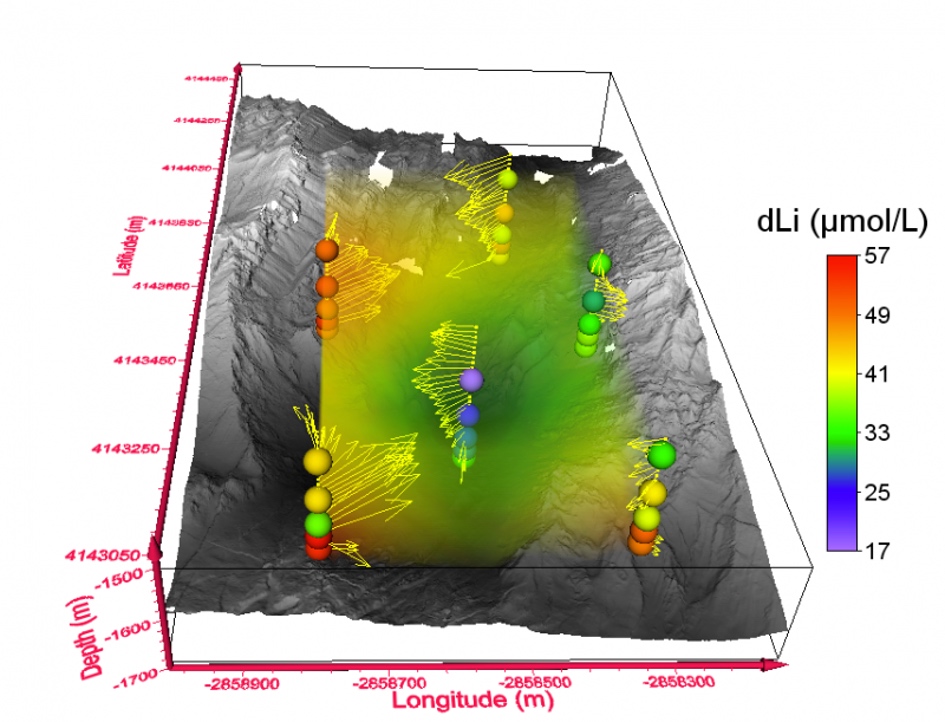Assessment of deep-sea mining on Ocean health
Today, the global demand for metal resources is increasing due to population growth, industrialization, digitalization, and the development of low carbon technologies and products. Among the metals in growing demand are lithium (Li), which is essential for lithium batteries, and strontium (Sr), which is used in electric motors. These elements, whose high economic interest is associated with a high risk of supply shortages, are considered “critical raw materials” by the European Union. Therefore, several studies are examining the feasibility of extracting Li and Sr from seawater, and in particular Li from hydrothermal vents which contain 10 to 20 times more Li than seawater. However, mining processes could lead to the release of various chemical elements, including those impacting ocean life, and thus have a major effect on the functioning of the ocean and its capacity to store atmospheric carbon dioxide.
Artigue and co-workers (2022, see reference below) conducted a study to constrain how and where Li and Sr from hydrothermal vents are dispersed in the ocean. This study was conducted at the Lucky Strike hydrothermal field (1700 m below sea level, Atlantic Ocean) which has been continuously monitored since 2010 as part of the European EMSO-Azores observatory. The results show that Li and Sr of hydrothermal origin can be detected in the water column more than 1km from their source, thus modifying the composition of the deep ocean. Moreover, their spatial dispersion is affected by local currents and interactions with minerals produced by hydrothermal activity. Further studies are underway to determine whether, in addition to impacting the chemical composition of the deep ocean, hydrothermal Li and Sr impact the diversity and development of ecosystems in extreme environments.

Figure: Lithium concentrations (1500-1700m depth) at the 6 stations studied over the bathymetric map of the hydrothermal field (Lucky Strike). Currents intensities and directions are in yellow and positions of hydrothermal vents are in pink.
Reference:
Artigue, L., Chavagnac, V., Destrigneville, C., Ferron, B., & Cathalot, C. (2022). Tracking the Lithium and Strontium Isotope Signature of Hydrothermal Plume in the Water Column: A Case Study at the EMSO-Azores Deep-Sea Observatory. Frontiers in Environmental Chemistry, 3. Access the paper:10.3389/fenvc.2022.784385
